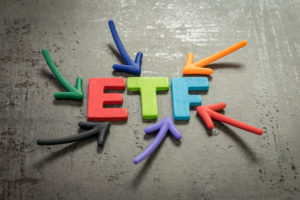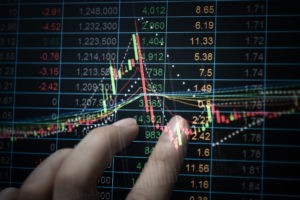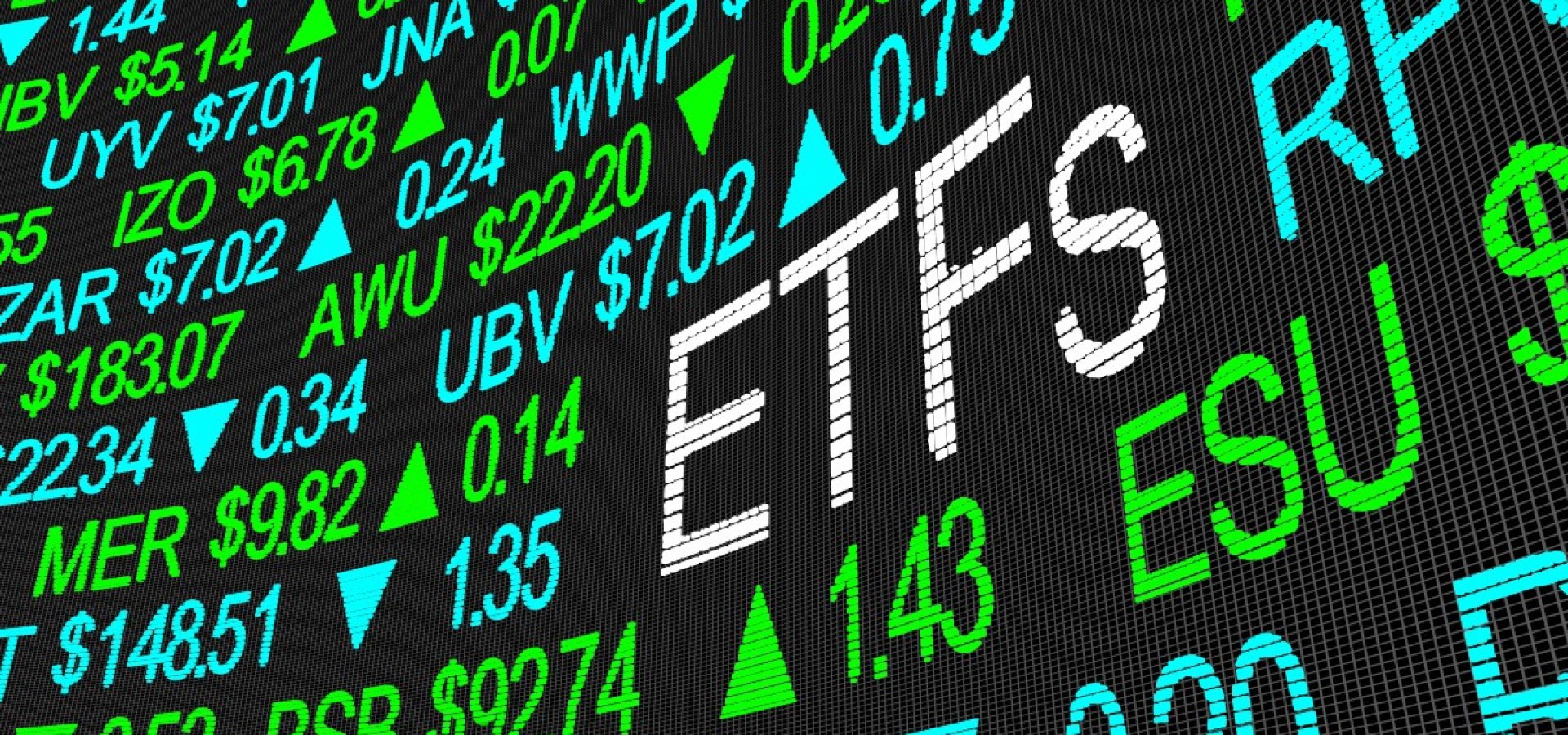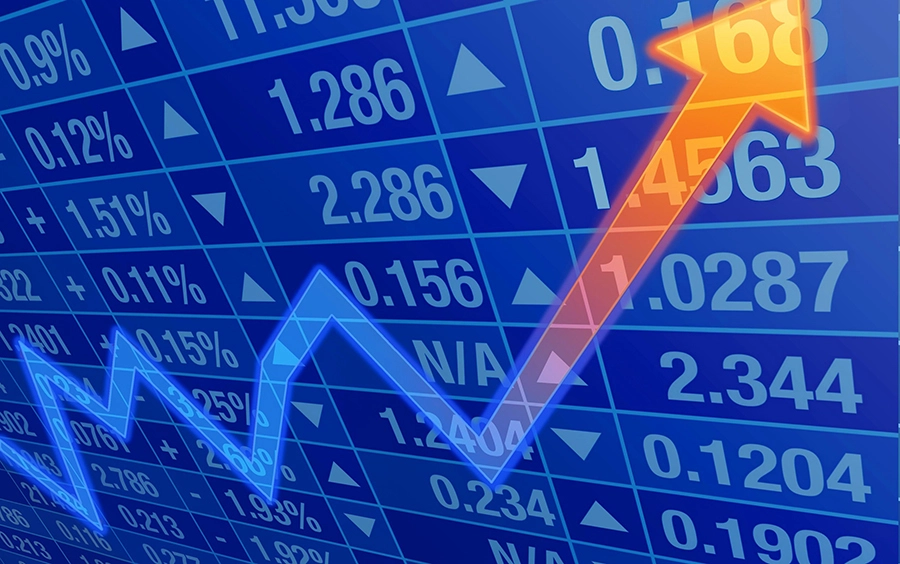An exchange-traded fund (ETF) is a collection of different securities that you can invest in. They can be composed of different types of securities, including stocks, bonds and of course, commodities. In fact, a single ETF can include a mixture of these different types. Although they appear to be similar to mutual funds, they do have a striking difference. This difference is that ETFs are traded on an exchange. They essentially act as security themselves, as if they were their own asset. They are marketable security, meaning it has a price a directly viewable price. This is unlike a mutual fund where the trades occur at a much slower rate. Traders can follow the prices of an ETF as it is exchanged over time, as the price can fluctuate rapidly.
The SPDR S&P 500 is one of the most famous ETFs. It follows an index, which follows the performance of the 500 largest public companies in the US, to help determine its’ price. Although it does simply follow an index, it does have investments in all of the companies represented by the said index.
Since we want to focus on commodities, we will be discussing commodity ETFs today, appropriately enough. Commodity ETFs are invested in tangible goods: agricultural products, metals, energy resources, etc. Unlike most other types of ETFs, commodity ETFs tend to have a narrower range of investments. As such they tend to focus on investing in a single type of commodity (e.g. gold, silver, oil). Either this or they invest in futures contracts. Those which act similarly to more traditional ETFs will follow a commodity index.
Why use an ETF?
These ETFs allow investors to explore trade without getting too bogged down in the details. You will not have to know how a particular type of contract works. You do not need to closely follow all the industries reliant on a commodity. Therefore you can start investing in commodities with a relatively low amount of knowledge. Or it can be viewed as a good testing ground for starting commodity trading.

The investments of these ETFs are more widespread so they are unlikely to suffer very heavy losses. That is unless the people controlling the ETF hasn’t been very responsible.
The next point to make is the price of ETFs. If you are putting money into an ETF, you are not paying for the price for an actual commodity. If you are investing in, say, gold, you will not need to pay the price of an actual block of gold. Instead, you are making a contribution to a fund, which means you are funding the investments of said fund. As such you will put forth an incredibly small amount of liquidity to invest in ETFs. Well below $100 dollars for many of these investments. This again makes these funds quite accessible to traditional new investors, or investors with low liquidity at least.
Moreover, ETFs give investors more control over their investments. Traditional, mutual, funds may restrict investors from pulling out of their fund. ETFs, however, act like any old security. You can sell your ETF share as long as you find someone willing to trade with you. This is the sort of freedom a mutual fund would not offer.
So, overall, ETFs give people more power than a traditional fund would and also remain quite accessible for investors.
Potential downsides

There are some downsides you can experience from ETFs. First off, you should know that ETFs do not track precisely with their underlying investments. This is because it needs to take some time to calculate how all of the collective stocks are doing, for a value. If the market takes a sudden turn, you may not know about it until it is too late. Additionally, the spreads and fees associated with the investments may skew the price of the actual investment.
The ETF may also start making investments that you have no say in. While it is true that you can pull out of an ETF when you want, you do not have as much control of the underlying investments.
Exchange-traded notes
Exchange-traded notes (ETNs) are another type of security that quite closely resemble ETFs. They function similarly to ETFs, in that multiple people can invest in that on the exchange. The difference is that their price is based on the index of assets. They act similarly to bonds, the only difference being that is that no-one pays any interest on them. So, in a way, they are in a way a fund that invests in multiple bonds.
Banks usually issue ETNs, who give returns to investors based on the performance of the said index. Investors can make profits in two ways with ETNs. They can wait for the ETN to reach maturity and pay them the returns. The institution will take out some fees to carry out this transaction. Or they can trade their ETN, much like they would with a common asset.
How do they differ from ETFs? Well, the real difference is that ETNs do not own any actual assets, whereas all ETFs deal in assets or a trading contract.
Advantages
ETNs have very similar advantages to ETFs. They both can be easily tracked on an exchange, and give traders quite a bit of freedom. You do not need to know all the details of the underlying investments. You can access them with very low amounts of cash. So they too are an accessible way for investors to start off.
Disadvantages

The value of an ETN can go down for reason totally out of your control. The institution that issued the ETN may have a lower credit rating. The institution may be unable to pay you back for economic or political reasons. You are essentially wholly dependent on the institution issuing the ETN.
Additionally, as with ETFs, there are certain tracking errors associated with the price of an ETN. If the market suddenly changes direction, you may not be aware for some time.
Conclusion
Overall ETNs and ETFs are both investments that are easily trackable and are quite accessible for first-time traders. They are not exactly the lowest risk investments if you want to trade for commodities. However, their low price means you can make investments without losing too much liquidity.









COMMENTS